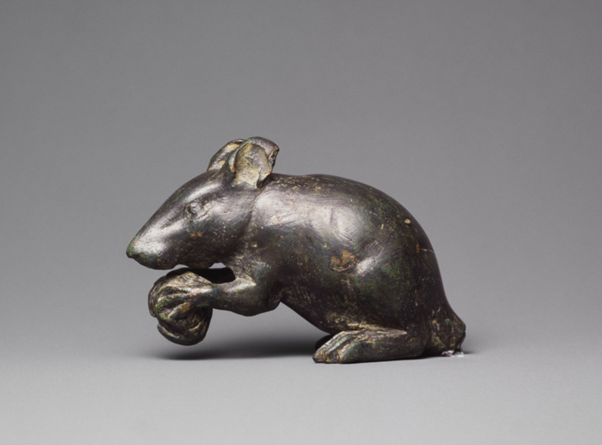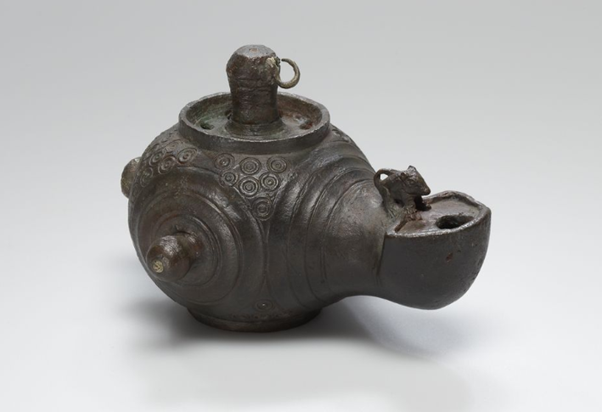Ancient Artefact of the Day: A Bronze Mouse - with snack for nibbling; Roman, ca. 1st Century AD.
Traditionally, such statuettes have been associated with the cult of the god Apollo Smintheus, but read on! #AAOTD
Image: Getty Museum (96. AC. 268)
Traditionally, such statuettes have been associated with the cult of the god Apollo Smintheus, but read on! #AAOTD
Image: Getty Museum (96. AC. 268)
Typically they have been associated with the cult of Apollo Smintheus, the deity who at the beginning of the ‘Iliad’ visits a plague upon the Greeks for their desecration of his temple and the mistreatment of his priest, Chryses.
These figurines are common throughout the Hellenistic and Roman worlds, with the British Museum alone holding 15 examples, including this darling little one of a crouching mouse holding a Papposilenos mask.
Image: British Museum (1876,0510.2)
Image: British Museum (1876,0510.2)
However, the association with Apollo is very circumstantial at best, largely deriving from the observation that the epithet “Smintheus” seems to be related to “sminthos,” which meant “mouse” in Mysian and Cretan Greek dialects.
Recent work on these figurines has convincingly argued that most were in fact designed as adornments to lamps, especially convincing given the evidence for solder and that most are not free-standing.
Image: Getty Villa
Image: Getty Villa

 Read on Twitter
Read on Twitter




